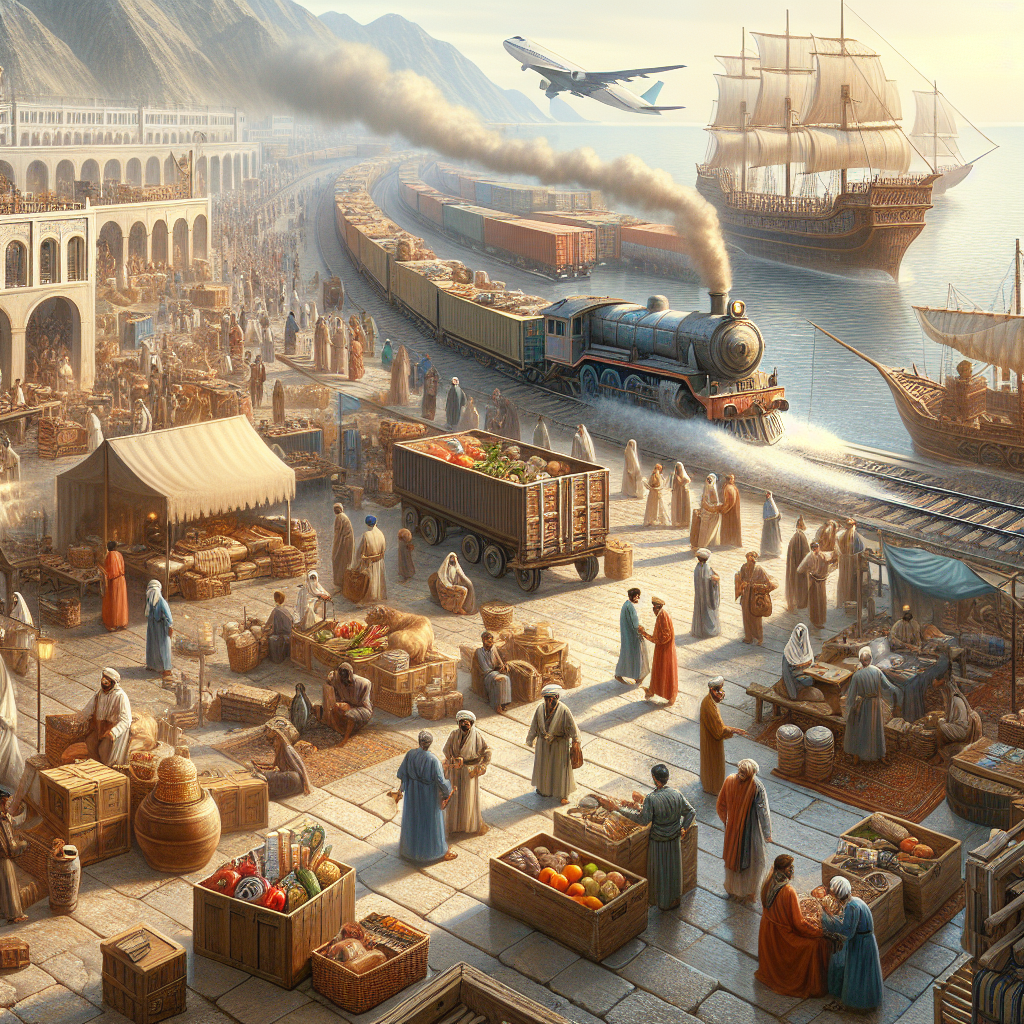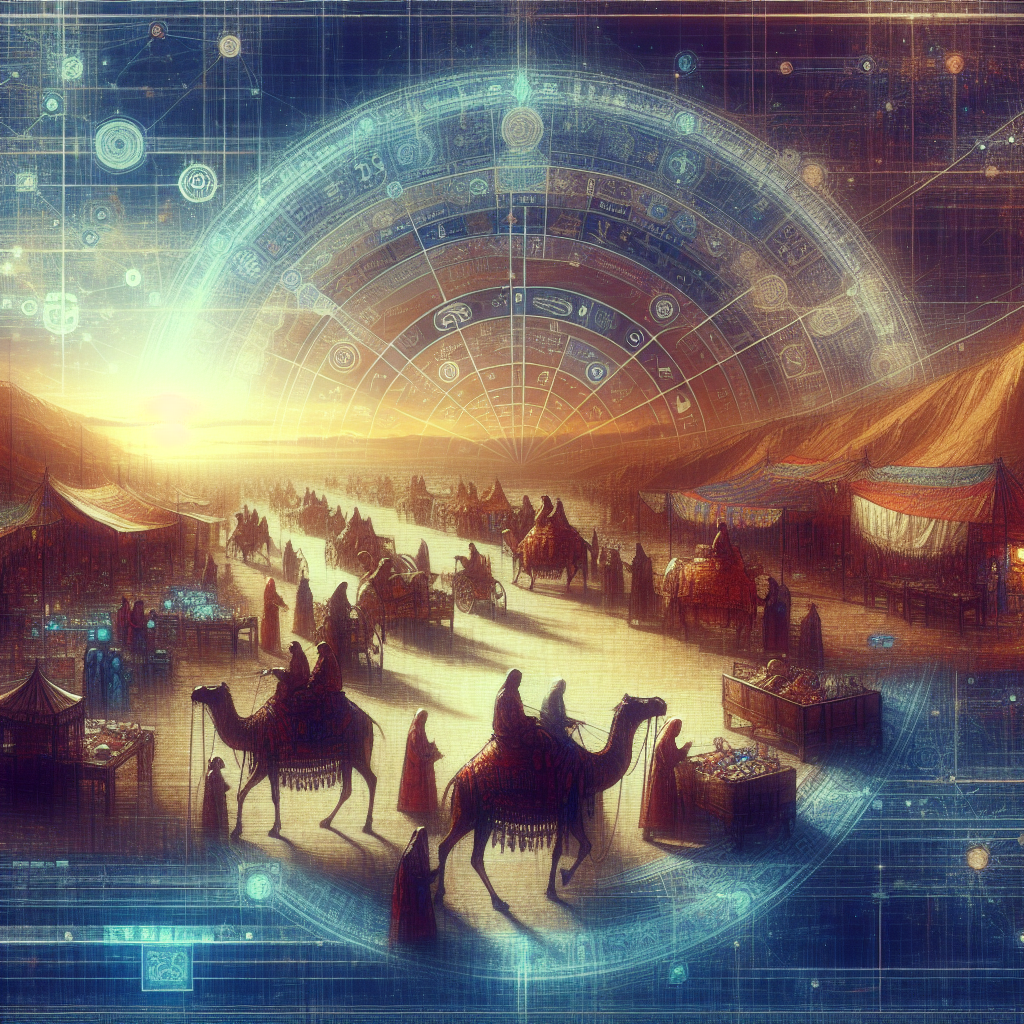In a world driven by globalization and cross-border transactions, the history of trade and commerce remains deeply rooted in the fabric of human civilization. Join us on a journey back in time as we unravel the fascinating beginnings of trade routes, market exchanges, and the evolution of commerce.

Trade has been an essential part of human interaction since ancient times, dating back to the early civilizations such as the Mesopotamians and Egyptians who engaged in barter trade for goods like food, tools, and textiles. As societies evolved, trade routes expanded, connecting distant lands and cultures, fostering the exchange of not only goods but also ideas, technologies, and cultural practices. The Silk Road, one of the most famous trade routes in history, played a significant role in linking the East and West, facilitating the exchange of silk, spices, precious metals, and other valuable commodities. This network of interconnected routes not only boosted economic growth but also contributed to the spread of knowledge, religions, and philosophies across different regions. The evolution of commerce saw the rise of marketplaces in bustling cities, where merchants from far and wide gathered to showcase their products and negotiate deals. These market exchanges laid the foundation for modern-day trade practices, including the establishment of currency, trade regulations, and commercial partnerships. Today, in the era of digital globalization, trade and commerce have transcended geographical boundaries, with e-commerce platforms enabling individuals and businesses to engage in transactions seamlessly across the globe. The history of trade and commerce serves as a testament to the ingenuity and resilience of human beings in fostering economic growth, cultural exchange, and global interconnectedness.
The Dawn of Trade: A Historical Perspective
Commerce, as a fundamental aspect of human interaction, has been an integral part of societies throughout history. The origins of commerce can be traced back to ancient civilizations where people engaged in rudimentary forms of exchange to acquire goods and services. These early forms of trade laid the foundation for the complex commercial networks we see today.
In Mesopotamia, one of the earliest known civilizations, bustling marketplaces served as hubs for trade where merchants from different regions would come together to exchange goods. This exchange not only facilitated the flow of commodities but also fostered cultural exchange and the spread of ideas.
One of the most iconic trade routes in history, the Silk Road, played a crucial role in connecting the East and West. Stretching over thousands of miles, this network of trade routes facilitated the exchange of silk, spices, precious metals, and other goods between civilizations. The Silk Road not only boosted economic activity but also led to the interchange of knowledge, technology, and cultural practices.
Over time, commerce evolved with the rise of empires and the development of sophisticated trading systems. The establishment of currency, banking systems, and trade regulations further transformed the landscape of commerce, enabling more efficient and widespread exchange of goods and services.

The Silk Road: Bridging Continents and Cultures
Stretching over 6,000 kilometers, the Silk Road was not just a physical route but a symbol of the interconnectedness of diverse societies. It was a network of ancient trade routes that linked the East and the West, fostering economic prosperity and cultural exchange. The Silk Road was not only a conduit for silk, but also for spices, precious metals, ceramics, and other valuable commodities that fueled the economies of the regions it traversed.
Moreover, the Silk Road was a melting pot of ideas and knowledge. It served as a bridge for the transmission of technologies, philosophies, religions, and artistic styles between different civilizations. The exchange of these intellectual goods not only enriched the societies along the Silk Road but also laid the foundation for future developments in science, art, and philosophy.
Along the Silk Road, travelers encountered a rich tapestry of cultures, languages, and traditions. The interactions between merchants, scholars, and pilgrims from various regions led to the blending of customs and beliefs, creating a unique fusion of East and West. This cultural interchange not only promoted tolerance and understanding but also sparked innovations in architecture, cuisine, and fashion.
Age of Exploration: From East to West

The Age of Exploration, a period of great maritime discoveries, marked a significant turning point in history as European powers set sail into the unknown in search of new trade routes to the East. This era of exploration not only reshaped the geographical understanding of the world but also had profound economic and cultural implications. The discovery of the New World, with its vast resources and unexplored lands, opened up a new chapter in global trade. The encounter between the Old World and the New World sparked a massive exchange of goods, ideas, and technologies that would forever change the course of history. European explorers brought back exotic spices, precious metals, and other valuable commodities from the Americas, enriching their home countries and fueling the growth of mercantilism. This influx of wealth laid the groundwork for the rise of powerful trading empires and the establishment of colonial territories around the globe. Furthermore, the Age of Exploration not only transformed economies but also had far-reaching cultural impacts. The exchange of goods and knowledge between different continents led to a blending of traditions, languages, and beliefs, creating a more interconnected and diverse world. This cultural exchange laid the foundation for a new era of globalization, shaping the modern world we live in today. In conclusion, the Age of Exploration was a pivotal period in human history that not only expanded global trade but also catalyzed the exchange of goods and ideas that transformed economies and societies worldwide, setting the stage for the modern era of commerce and cultural exchange.
Industrial Revolution: A Game-Changer for Commerce

The Industrial Revolution, which took place primarily in the 18th and 19th centuries, was a pivotal period that revolutionized the economic and social fabric of society. This era saw a profound shift from agrarian economies to industrialized ones, as innovations in machinery and manufacturing processes led to unprecedented levels of productivity and efficiency.
One of the key factors driving the Industrial Revolution was the development of new technologies, such as the steam engine and mechanized looms, which enabled mass production on a scale never seen before. This increased output not only fueled economic growth but also created new opportunities for trade and commerce.
Furthermore, the improvements in transportation, particularly the expansion of railway networks and the construction of canals, facilitated the movement of goods over long distances at a much faster pace. This connectivity helped to link previously isolated markets, opening up new avenues for trade and exchange.
In addition to technological advancements, the Industrial Revolution also brought about significant changes in communication systems. The invention of the telegraph, for example, revolutionized long-distance communication, allowing for quicker dissemination of information and better coordination of business activities.
The Digital Age: Redefining Global Trade
In today's digital age, e-commerce and online platforms have truly transformed the landscape of trade and commerce. The convenience and accessibility provided by these platforms have reshaped consumer behavior, enabling individuals to browse, compare, and purchase products from the comfort of their homes. This shift has not only expanded the reach of businesses but has also empowered smaller enterprises and individual entrepreneurs to compete on a global scale.
Moreover, the advent of e-commerce has fostered innovation in logistics and supply chain management, leading to more efficient and streamlined processes. From automated inventory management systems to sophisticated shipping solutions, businesses are leveraging technology to optimize their operations and deliver products to customers in a timely manner.
Additionally, the data generated through e-commerce transactions has opened up new possibilities for personalized marketing and customer engagement. By analyzing consumer behavior and preferences, businesses can tailor their offerings and marketing strategies to create a more customized shopping experience, ultimately fostering loyalty and repeat business.
Comments